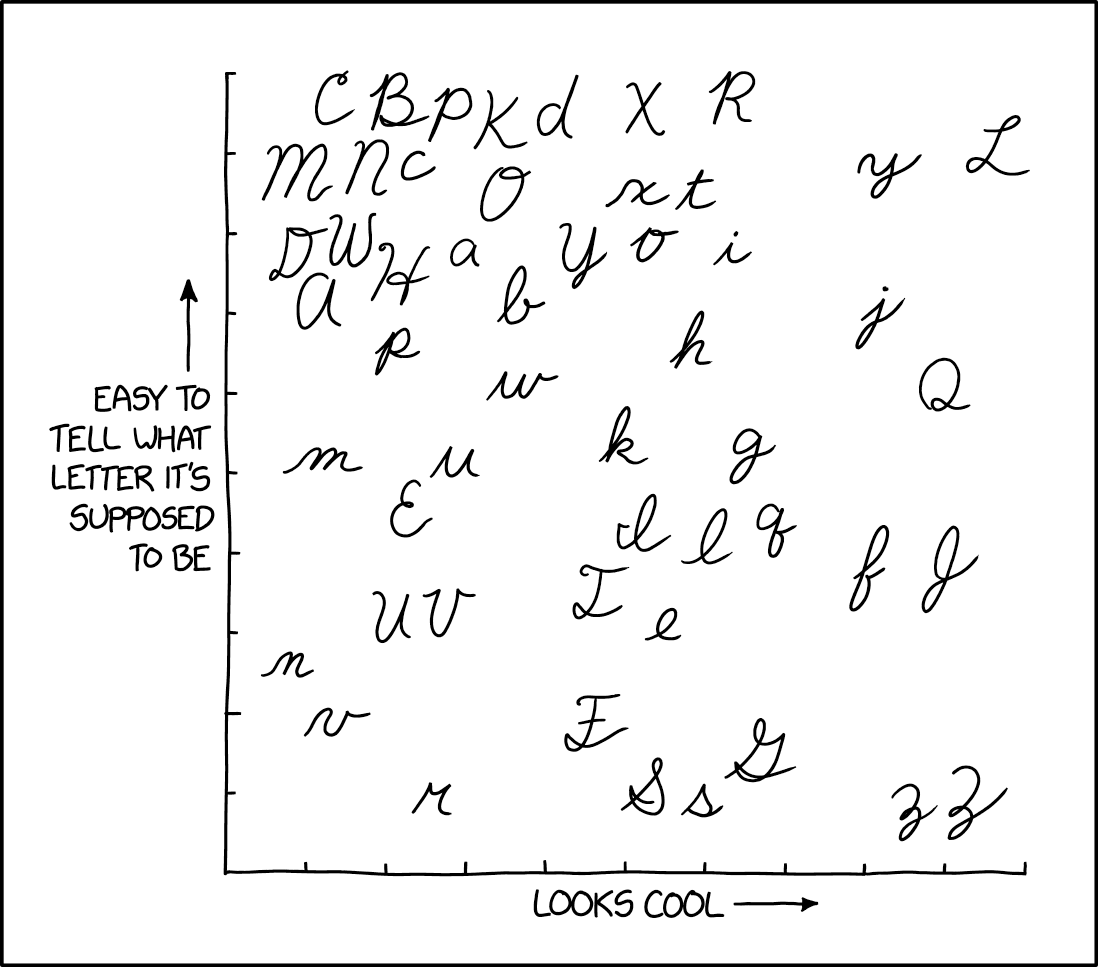this post was submitted on 28 Mar 2024
811 points (97.9% liked)
xkcd
8836 readers
105 users here now
A community for a webcomic of romance, sarcasm, math, and language.
founded 1 year ago
MODERATORS
you are viewing a single comment's thread
view the rest of the comments
view the rest of the comments

I recently found an old letter from my grandpa to my grandma during the war in Old German handwriting. A lot of spikes. Decided to learn to read it. Nice journey, I recommend. (Not necessarily old GERMAN handwriting, but, you now, old handwriting in your mother tongue).
German Kurrent is almost an entire alphabet on its own. Like how the hell can you read this https://upload.wikimedia.org/wikipedia/commons/thumb/6/65/Lessing_Kleist-Brief.jpg/800px-Lessing_Kleist-Brief.jpg
And then they also have Sütterlin which is almost alien https://upload.wikimedia.org/wikipedia/commons/1/1b/S%C3%BCtterlinschrift.png
For Kurrent the umlauts next to the capital letters looks identical to the small e lol
that's because they are, umlauts came from writing vowel digraphs as the first letter with the second letter above it, for example ueber/veber -> uͤber/vͤber -> über/v̈ber -> über (although über in particular didn't actually originally have the spelling ueber). "e" turned into two lines, which now is represented as two dots/a diaeresis on most computer fonts. that's why, if you don't have access to diacritics (e.g. on technology), you write ä/ö/ü like ae/oe/ue (and why you have names which are spelled like Goethe instead of Göthe)
Oh that's neat!